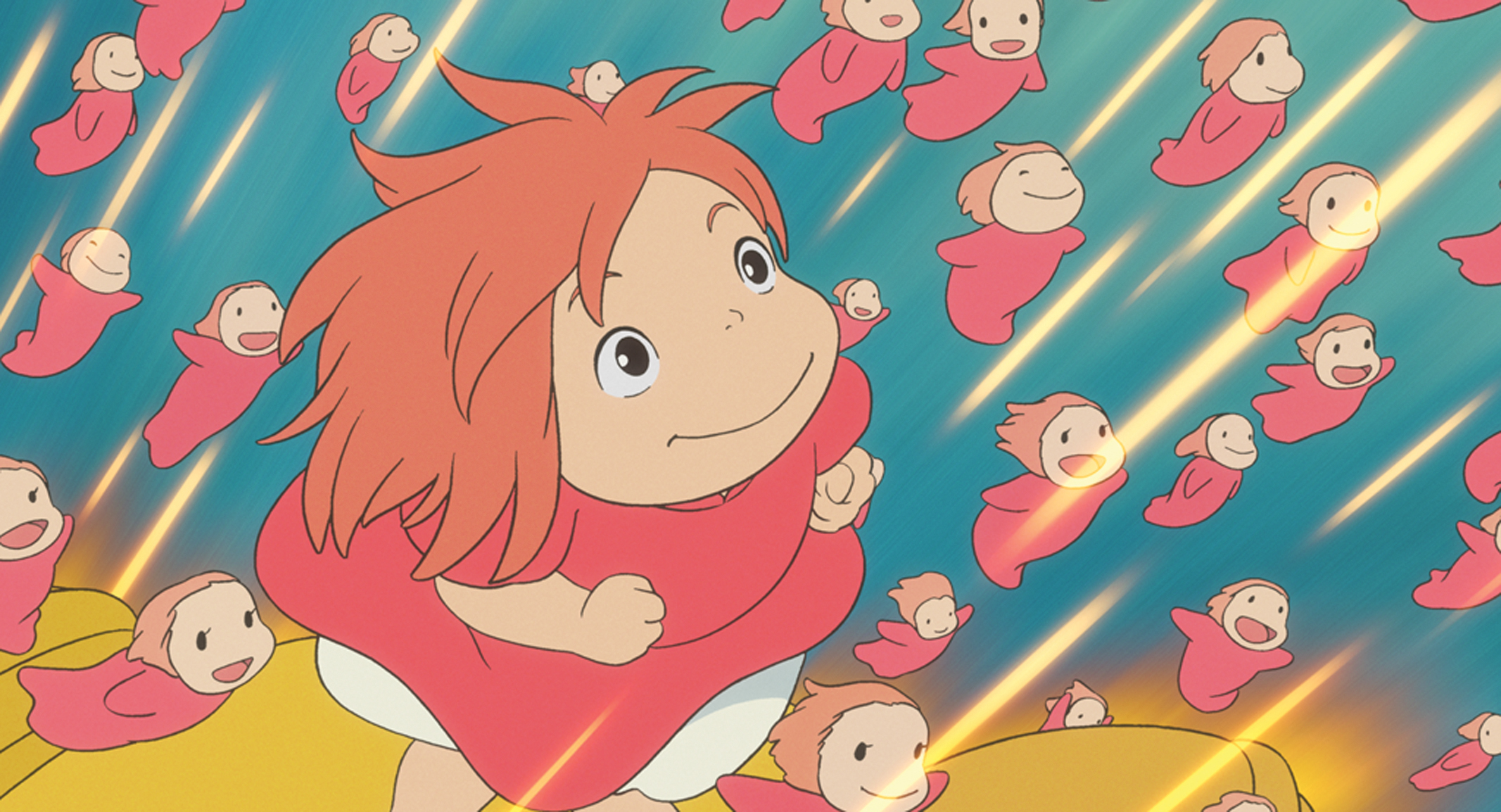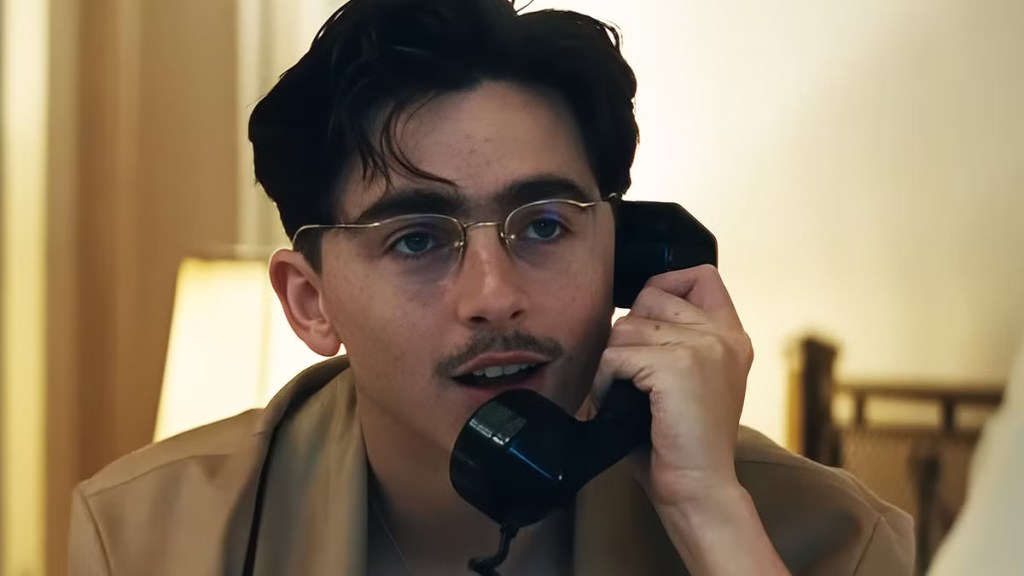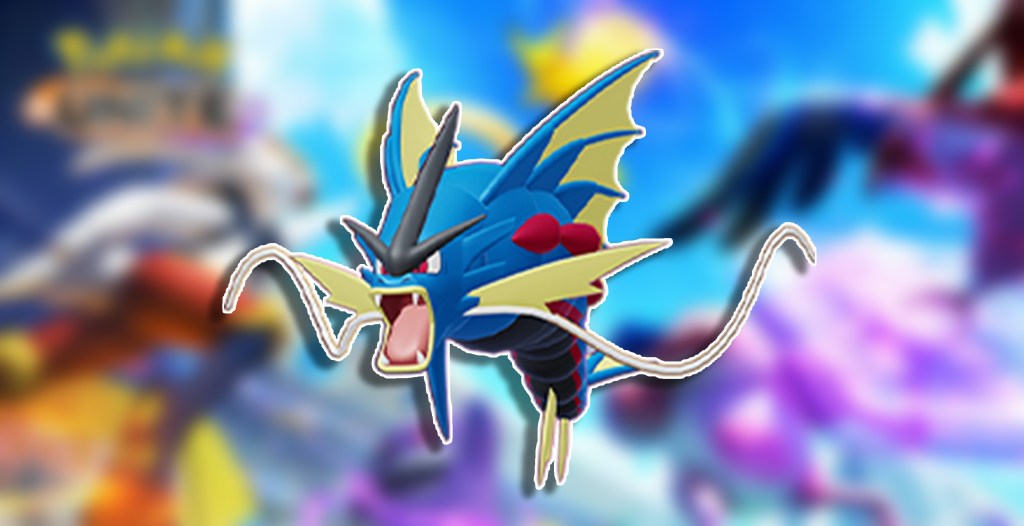You’re checking your social media feeds and see pictures of No-Face and Totoro. Your friends keep gushing about a handsome, emotionally unavailable wizard named Howl, and you quietly wonder what the fuss is all about.
For over 30 years, Japanese animation studio Studio Ghibli has thrilled fans of all ages with its array of feature films and animated shorts. Headquartered in Tokyo and founded by the legendary Hayao Miyazaki along with his trusted collaborators Isao Takahata and Toshio Suzuki, Studio Ghibli drew a fierce cult following in its early years. Miyazaki’s company has since gone on to achieve mainstream success, breaking records, making Oscar history, and winning over film critics and fans with its collection of more than 24 films and TV series.
Videos by VICE
Ask any fan and they’ll tell you that Ghibli films are an experience, with incredible attention to detail in each title. But fitting into Miyazaki’s world will take time and dedication (You can’t just watch English dubs of film clips on YouTube and call yourself a true fan, can you?). So here’s the ultimate guide to Ghibli films—which ones to watch first and why.
Note: Studio Ghibli movies embody Japan so, if you can, you should absolutely watch them in their original, authentic, Japanese speaking form—with subtitles. Because like one other legendary Asian director once said, you’ll be introduced to so many more amazing films “once you overcome the one inch tall barrier of subtitles.”

So you want to watch… witches, wizards, and magic
Studio Ghibli movies are synonymous with magic: witches, wizards, spirits, and life-altering transformations. But Miyazaki and his team of writers and directors don’t sugarcoat the effects of magic, which almost always comes at a heavy price. The studio’s biggest and most successful production Spirited Away is full of magic and the complications that come with it—almost like Alice in Wonderland, but with more depth and maturity.
In it, a young girl named Chihiro finds herself trapped in the spirit world and is forced to watch her parents transform into pigs. Lost, alone, and frightened (who the heck wouldn’t be), she finds work in a spirit bathhouse and makes life-changing decisions along the way with the help of spirit friends.
When it comes to Ghibli witches and wizards, Kiki’s Delivery Service is an obvious choice. With a broom, talking black cat, and magical powers, tween witch Kiki fits the mold. She leaves the comforts of home to strike a place in the world but ends up struggling to figure out how to survive while also doing what she loves (hear, hear). Burnout gets the best of Kiki as she loses her magical abilities. But she discovers the importance of self-care and ultimately finds herself again. The perfect guide for depressed and broke millennials, really.
Watch this when you’re… babysitting or entertaining aspiring young witches at home, celebrating halloween, or just chilling at home on a Saturday night.
You’ll dig this if you like: Sabrina the Teenage Witch, Chilling Adventures of Sabrina, Bewitched, The Wizard of Oz
Watch list: Spirited Away, Kiki’s Delivery Service, Laputa: Castle in the Sky, Howl’s Moving Castle, Earwig and the Witch
So you want to watch… environmentalism and nature
Miyazaki’s love and respect for nature is no secret. For him, environmentalism is also about power, and this message is apparent in several Ghibli masterpieces like Princess Mononoke, Nausicaä of the Valley of the Wind, Pom Poko and of course, My Neighbor Totoro. “We don’t subordinate the natural setting to the characters,” Miyazaki once said in interviews with the Japanese press. “That is because we feel that the world is beautiful… We think that weather, time, rays of light, plants, water, and wind—what make up the landscape—are all beautiful. That is why we make efforts to incorporate them as much as possible in our work.”
A world swathed in toxic jungles and dominated by giant mutant insects is the setting for Nausicaä of the Valley of the Wind, Miyazaki’s renowned post-apocalyptic tale where life teems and threatens human survival, and humanity teeters on the brink of extinction.
Environmental issues like water pollution and land reclamation are tackled in Spirited Away, which references dying rivers overwhelmed with human waste due to greed. At its core, Princess Mononoke is a tale about survival, told in a beautiful yet bleak world where humans are in an all-out war with one another and the environment.
Trees, grasslands, clear rivers and streams; My Neighbor Totoro is teeming with nature scenes. The beloved children’s film chronicles the story of sisters Satsuki and Mei, who find excitement and adventure when they move with their academic father to a new house in the Japanese countryside while their mother seeks treatment in a hospital. Along the way, they encounter a group of forest spirits and befriend the biggest guy of all: Totoro, who controls elements like the wind.
Watch this when you’re… needing optimism, dealing with eco-anxiety, or just want something to watch on a rainy day.
You’ll dig this if you like: Avatar, Pocahontas, Okja, FernGully: The Last Rainforest
Watch list: Spirited Away, Princess Mononoke, My Neighbor Totoro, Nausicaä of the Valley of the Wind, Pom Poko, The Red Turtle, The Tale of the Princess Kaguya

So you want to watch… something silly
One of the great things about Ghibli films is their ability to make you wish you were a kid again. Similar to My Neighbor Totoro, Ponyo is generally lighthearted and has a playful theme—almost nonsensical if you think about it: A goldfish princess falls in love with a human boy named Sosuke, and no one bats an eye when she ends up endangering his village and expresses her desire to remain with him and his mother forever. Serious The Little Mermaid vibes.
In The Cat Returns, Haru, a shy high schooler is transformed (unwillingly) into a cat after she saves one from getting hit by traffic. The kitty turns out to be Lune, prince of a cat kingdom (yes, really), and the new couple are betrothed. There isn’t much point in trying to understand this one—just sit back, relax, and laugh at the antics of the film’s unsung hero: a brash and grumpy fat cat named Muta, who reveals himself to be notorious criminal Renaldo Moon, who devoured an entire lake of fish at one go.
Watch this when you’re… feeling silly during a date, babysitting, or just needing a mental break from the daily stresses of life.
You’ll dig this if you like: The Aristocats, Cats, the Cats & Dogs film franchise
Watch list: The Cat Returns, Pom Poko, Ponyo, Porco Rosso
So you want to watch… strong and independent female leads
Right off the bat, Miyazaki sets himself apart by creating films with relatable female protagonists: young women who are the leaders of their own stories. “I wanted to make a movie, especially for the daughters of my friends,” Miyazaki once said, referring to his masterpiece Spirited Away, which centers on the story of Chihiro, who is forced to overcome incredible hardship and stress to save her parents.
Young witch Kiki, wolf-girl Princess Mononoke, and fan-favorite silver-haired Sophie from Howl’s Moving Castle, are other great examples of iconic Ghibli heroines.
Sent from her foster home in the city to a sleepy town in the wetlands, Anna meets the mysterious Marnie in the film When Marnie Was There. The two spend the summer together, Anna dealing with physical recovery and depression and Marnie with her secrets. It’s a rare Ghibli take on abandonment, emotional loss, and closure, depicted brilliantly as the friendship unravels.
But perhaps the most criminally underrated Ghibli heroine of all would be Takeo, an unmarried office-woman from Tokyo in her 20s who finds love and respite in the countryside. A powerful ode to nostalgia and the beauty of growing up, Only Yesterday is a transformative experience any woman can relate to.
And its ending scene (set to Japanese singer Miyako Harumi’s cover of the Bette Midler classic The Rose) may very well be the greatest and most touching farewell to childhood and innocence ever put to film.
Watch this when you’re… with friends, feeling proud or down, celebrating International Women’s Day.
You’ll dig this if you like: Anastasia, Little Women, Lady Bird, Moana, To All the Boys I’ve Loved Before, Captain Marvel
Watch list: Princess Mononoke, Spirited Away, Kiki’s Delivery Service, Howl’s Moving Castle, Only Yesterday, When Marnie Was There
So you want to watch… history
Touted as the darkest and hardest Ghibli film to watch and proclaimed to be “one of the greatest war films ever made,” Grave of the Fireflies tells the story of the ugliness of war and the heartbreak and tragedy that comes with it. Directed by the late Isao Takahata, the film follows two starving orphans and their desperate struggle to survive the final months of World War II.
Another worthy contender in this category is The Wind Rises, Miyazaki’s bittersweet, moving biopic of Japanese aircraft designer Jiro Horikoshi. Horikoshi was the chief engineer of the Mitsubishi A6M Zero fighter plane, which the Japanese military would use during World War II, including in the attack on Pearl Harbor. In true biopic fashion, the film pairs Horikoshi’s journey from childhood to create the perfect airplane, with an ill-fated romance.
In one of many episodic scenes, Miyazaki recreates the 1923 Kanto earthquake which killed staggering numbers of people and at the time, was considered the worst natural disaster ever to strike Japan. Pain, chaos, and devastation are captured and portrayed brilliantly in a four-second sequence, which Miyazaki revealed took a painstaking 13 months to animate.
Young love blossoming in the springtime of post-war Yokohama will give you butterflies in From Up on Poppy Hill. At 16, prim and prudent Umi looks after her family in a boarding house atop a hill, where she raises naval signal flags daily to wish passing ships in the harbor below a good voyage. She falls in love with her smart and dashing schoolmate Shun, but a wartime family secret may force them apart. The story unfolds in a fast-modernizing Japan swept up in preparations for the 1964 Summer Olympic Games in Tokyo, the quaint nostalgia captured in classic Studio Ghibli fashion.
Not to be missed: The iconic 1963 Japanese hit “Sukiyaki,” of sadness and loss, plays in one scene.
Watch this if you’re… feeling brave.
You’ll dig this if you like: When the Wind Blows, The Iron Giant, Persepolis, The Breadwinner (Though these Studio Ghibli titles are pretty incomparable)
Watch list: Grave of the Fireflies, Up on Poppy Hill, The Wind Rises
With contributions from JC Gotinga. Follow Heather Chen and JC Gotinga on Twitter.
More
From VICE
-

A24 -

Screenshot: Epic Games -

Mega Gyarados in Pokemon UNITE


